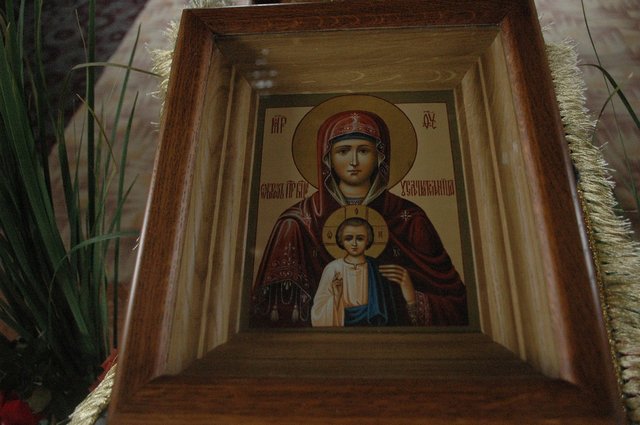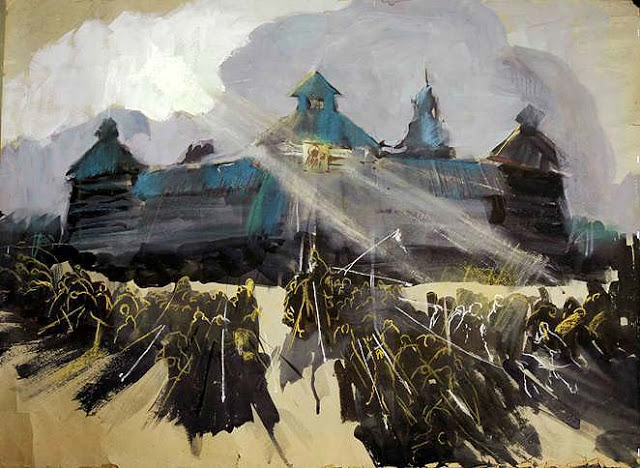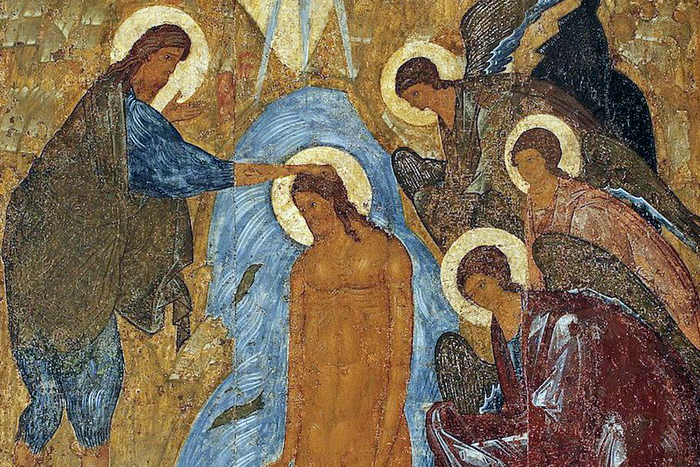
The four canonical Gospels report that Jesus Christ was baptized in the waters of the Jordan by John the Baptist. On the basis of the Gospel narrative, an iconography of the great feast was formed. It is curious that the Jordan River in the images of the Epiphany is filled with fish, snakes, dragons and mythical figures. All this is found more than once among the artistic images of Baptism following the Byzantine canon, but does not echo the Gospel texts. Explanations of unusual characters inhabiting the holy river are found in ancient texts, Genesis and Psalms.
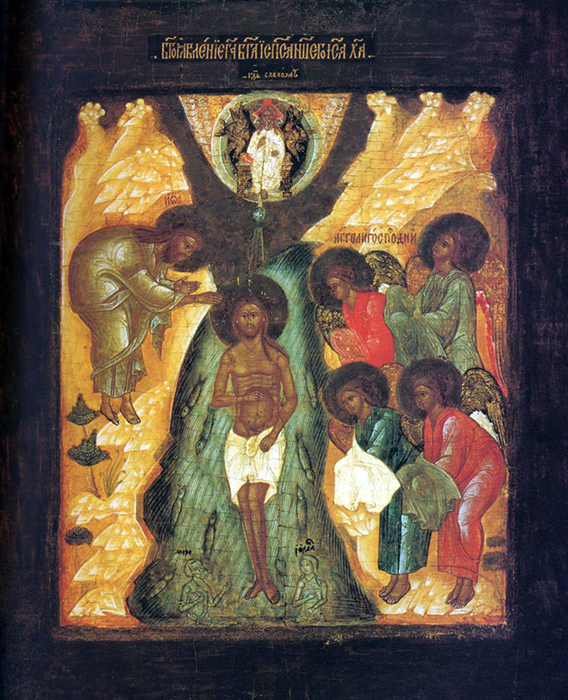
Erminia (ancient manual on icon painting) gives the following instructions regarding the depiction of the Epiphany: “Christ stands in the midst of the Jordan, without clothes. On the bank of this river, at the right hand of Christ, the Forerunner looks into the sky, raising his left hand upward, and holds his right hand over the head of Christ. The sky is visible above them, and the Holy Spirit descends from there; it is written in the ray: This is my beloved Son, in whom I am well pleased. On the left side, the angels stand reverently, stretching out their arms hidden under their robes. At a distance from John in the middle of the Jordan, an elder lies in the water, turning his face back, and looks with fear at Christ, while he himself pours water from a jug. [It symbolizes Jordan driven back (Psalm 114:3-5)]”. The Jordan was often depicted as a Roman river god, an elder with a vessel from which water flows.
Verses 3-5 of Psalm 114 also mention the sea, the personification of which is often adjacent to the image of the Jordan: “The sea saw it, and fled: Jordan was driven back. The mountains skipped like rams, and the little hills like lambs. What ailed thee, O thou sea, that thou fleddest? thou Jordan, that thou wast driven back?” It emphasizes how the Jews miraculously crossed the Red Sea. Words about this event are heard in the canons of the Feast of the Epiphany. The words of the Psalms not only refer to Old Testament events, but also create a transition to the New Testament, prophesying of the Baptism of the Lord. In miniatures illustrating the psalms, in the depiction of the Epiphany there could be two symbolic persons nearby: the sea and the Jordan River.
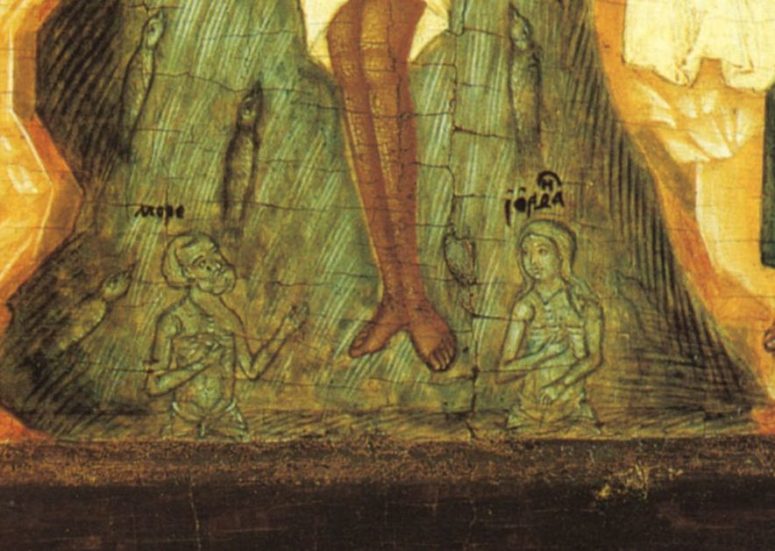
The difficulties of “translating” Byzantine iconography while painting baptismal images in Russia are quite understandable. Difficulties with the names and characters of the personifications of the river and the sea in such icons were explained by the fact that the author, for example, mixed the personifications, not knowing their history. This could happen with the icon from Solvychegodsk by craftsman Mikhail (end of the XVI century). Here, the Jordan River is a female figure, and the sea is depicted as a man. In Greek, the word ‘sea’ is feminine, and ‘river’ is neuter (in the usual case) or masculine (if we are talking about a very large river). The Greek-Russian dictionary of the New Testament indicates the masculine gender of the word “river.” This is the original gender of the personifications of the sea and river under consideration.
The young man is the third figure-symbol of the water element. The reason for the appearance of the young man figure in the lower field of the icon of Baptism is treated differently. On the one hand, he was perceived as another personification of the sea, instead of a female figure located next to the personification of the Jordan. At the same time, there is a more convincing version. His image can be interpreted as the personification of the Jordan or one of its streams. According to ancient tradition, the river in which Jesus Christ was baptized was poured by the streams of Jor and Dan; this was reflected in a book miniature. If a young man is depicted in the depths of the water next to an elder leaning on a vessel, then this pair of figures is the personification of two rivers that merged into the Jordan. A similar personification is shown in the icon of the end of the 15th century from the Kirillo-Belozersky monastery (here a young man sits on a pair of fish, supposedly dolphins)
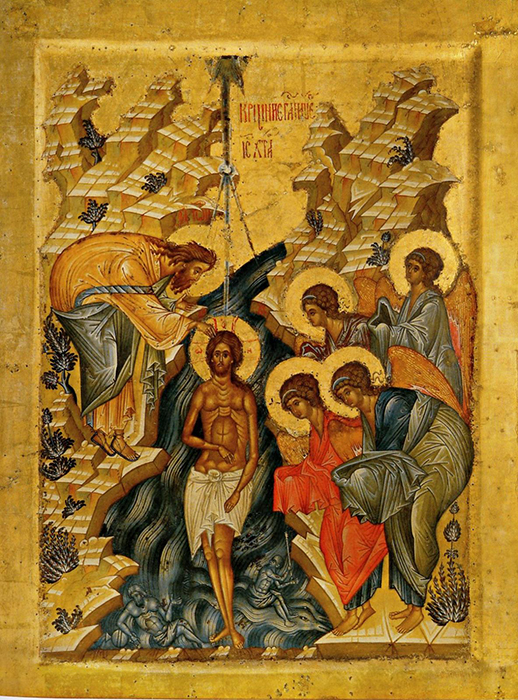
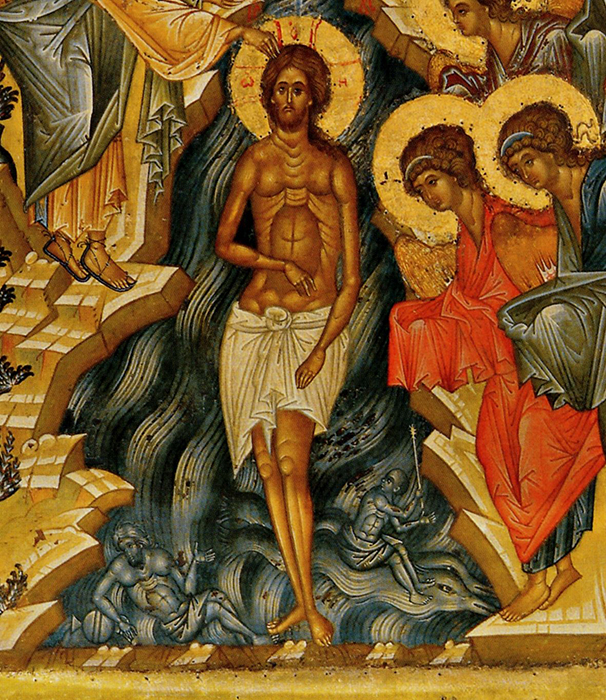
“Fishes are swimming near Christ,” is the conclusion of the instructions of Erminia regarding the depiction of the Baptism of the Lord. Fish is the oldest symbol of Christ and of believers as well. The word ‘fish’ in Latin sounded like ‘pisciculli’, and the font was called the word ‘piscina’, that is, fish nursery or pond. Along with the depiction of fish in Jordan waters corresponding to such an interpretation, we encounter a curious case in the Greek icon of the 18th century, when toothy fish, like a pack of predators, surround the Savior. One of these amazing creatures looks like a snake.
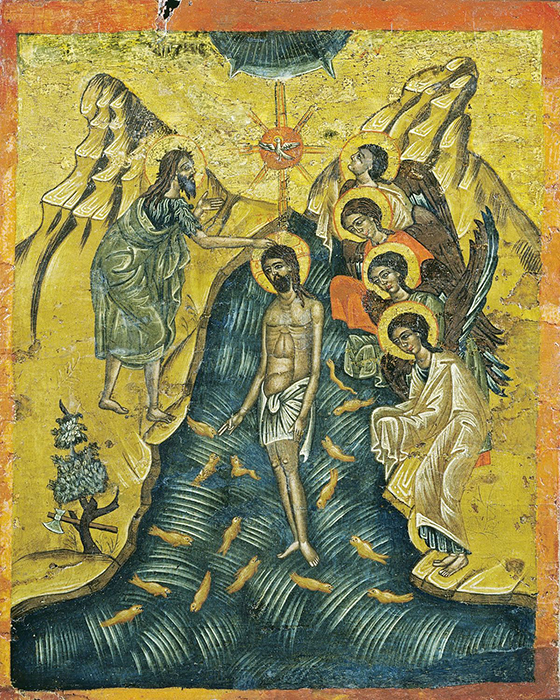
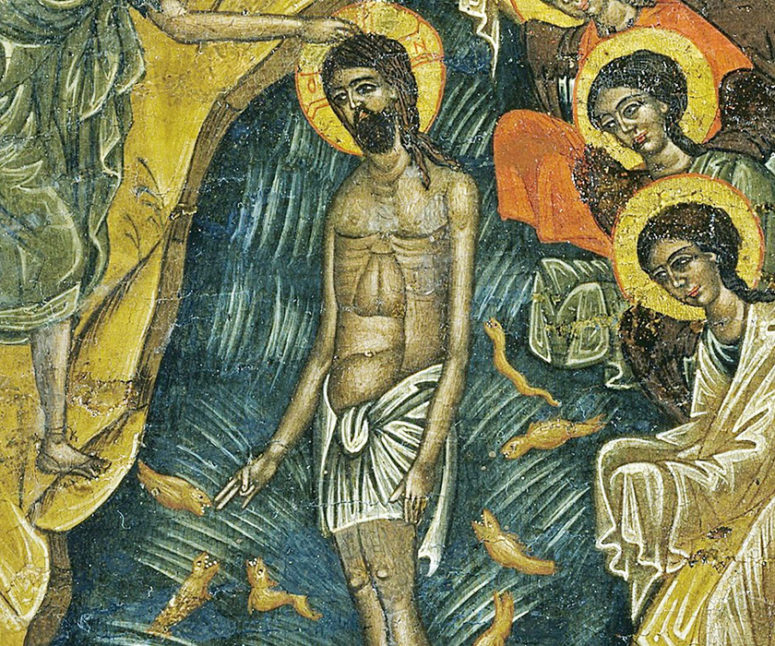
The snake and dragon also appear in the icon of the Epiphany. It is noteworthy that the word ‘draco’ can be simultaneously translated from Latin as “dragon” and “snake”. For Christians, the dragon is a symbolic depiction of the Devil. The snake, which is also a symbol of wisdom, is interpreted negatively in Baptism icon. The image of dragons and snakes (overridden) goes back to the text in Genesis (Genesis 3:15), and Psalm 74: 13-14 (“Thou didst divide the sea by thy strength: thou brakest the heads of the dragons in the waters”)

Through this psalm, the events of the Fall and Baptism are connected. “The heads of the dragons” (in Church Slavonic Latin word ‘draco’ is translated as ‘snake’) are shown in the Macedonian Epiphany icon, painted by David from Selenica.

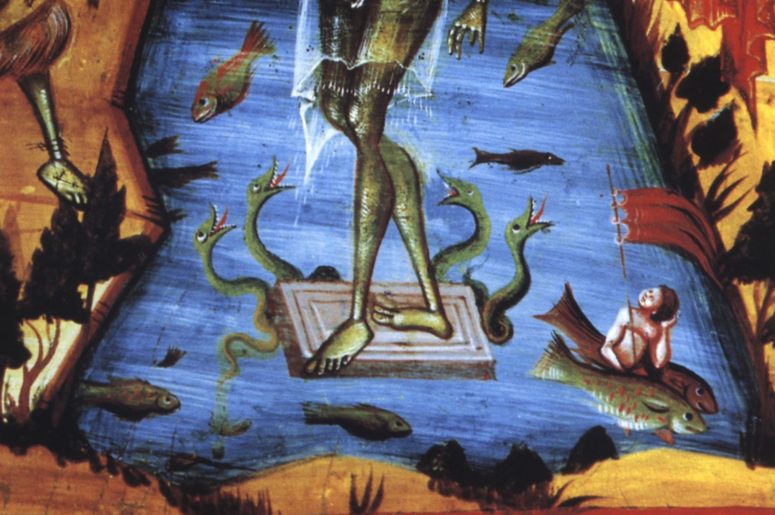
Thus, symbolic images surrounding the figure of the Savior on the icon of Baptism, have ancient Old Testament and Christian roots and at the same time semantic unity in glorifying the feast of the manifestation of God to the world. The beauty and prophetic piercingness of the Old Testament texts united with the good news of the New Testament narrative.
Translated by The Catalogue of Good Deeds
Source: https://pravlife.org/ru/content/ikona-kreshcheniya-gospodnya-kogo-i-pochemu-mozhno-uvidet-u-nog-spasitelya-v-iordane

